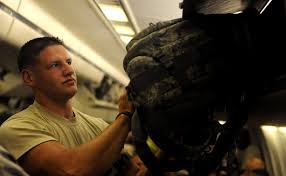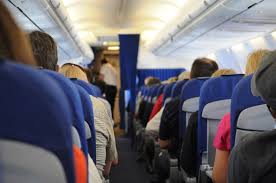Spring Time Allergies
Spring brings warmer weather and longer days, but for some, these seasonal changes aren’t welcomed. For many of us, they’re eclipsed by itchy eyes, sneezing, and congestion from hay fever, snow moulds and other allergies. What to do? For milder cases, home remedies may provide all the relief you need, with relatively little expense or hassle. Even people with bad allergies who need medication may find these at-home tips helpful for easing symptoms.
Images of snow moulds:
Here are some helpful tips on what you can do to relieve allergy symptoms:
- Limit your time outdoors – Each spring, trees release billions of tiny pollen grains into the air. When you breathe them into your nose and lungs, they can trigger an allergic reaction. Staying inside can help, especially on windy days and during the early morning hours, when pollen counts are highest.
- When you’ve been outdoors, take a shower, wash your hair, and change your clothes immediately when you come in to wash the pollen off.
- Protect yourself early on, be proactive – consult with either Dr. Rodwin about what NATURAL allergy supplements would be best suited for you and your symptoms and start taking these prior to allergy season.
- Allergy proof your home: Keep windows shut, use your air conditioner, take shoes off at the door, this will keep allergens outside. Use a HEPA (high-efficiency particulate air) filter on your vacuum and possibly a HEPA air filter on your furnace or a portable one (Questions? Ask Dr. Barbara Rodwin)
For some, however, allergies are severe and require the attention of a doctor or other health care professional. At Back to Health Wellness Centre, Dr. Rodwin can provide different services such as acupuncture, laser therapy, or prescribe various Natural allergy supplements to help relieve allergy symptoms.
Spring Cleaning
Proper ergonomics are not just for the workplace, they are valuable for your home too, especially when undertaking spring cleaning! The following are useful tips to use when engaging in some common household spring cleaning activities that will help prevent injuries.
- Like with other types of physical work, remember to warm up before starting the activity.
- Pace yourself and take frequent breaks to stretch out achy muscles.
- Make sure mops, brooms and vacuum cleaners have sufficiently long handles so you are not hunched over while doing your spring cleaning. When using them do not lean from the hips as this will place a lot of pressure on the lower back. Rather you should keep your hips and back straight and squat from the knees. Excellent workout for the thighs!
- Stand straight and use your legs to support your weight while cleaning.
- When moving to the side, step in that direction rather than twisting your body to help prevent back injury.
- When cleaning windows and painting, alternate which arm you are using and don’t look up. If painting a ceiling you should place the roller on a broom handle, back up from the task and look ahead and not up! Questions, feel free to ask Dr. Barbara Rodwin, dr.rodwin@back2health4you.com.
- When cleaning closets and other organizing, lift from the front so that you are not twisting your back.
- Packing and unpacking boxes: Put them up on a table instead of leaning down to pack them.
The house needs a few touch-ups? Don’t forget proper posture when working with your paint brush!
- If painting a ceiling you should place the roller on a broom handle, back up from the task and look ahead and not up!
- When working on low areas, squat or kneel instead of bending at the waist. Use a foam pad under your knees and stand up to take a stretch break periodically.
- Painting is a repetitive motion and can put a great deal of strain on your arms, fore-arms and wrists. Take frequent stretch breaks and apply ice if any pain occurs. Alternate between the use of each arm, do not just use the dominant arm to paint as I then see neck, shoulder, and arm and hand issues due to this. When completing the middle of a wall or ceiling use the non-dominant hand as this does not require fine motor movement.
- Like with any major household project, don’t try to do it all in a single day. Your body will thank you for it!
Travelling
March is a popular travel month, especially for those with school age children looking to get away for March Break. The following are some tips to help make your travel more comfortable and hopefully injury free!
Luggage
Luggage: Carrying luggage can cause back, shoulder and neck pain. There are some things you can do to decrease the risk of injury. When you roll your luggage try to push the luggage and not pull it behind you. Doing it this way will decrease neck, shoulder and back problems. Always lift with the weight of the luggage close to your body and USE YOUR LEGS WHEN LIFTING. When you take it off the luggage belt ensure you lift with your legs, step straight back and then turn your whole body to put it down. Often people rotate through the torso to turn and put their luggage down which then causes lower back problems to occur.
Driving
Driving Long Distances: Low back pain is a common complaint when driving long distances but it’s not the only complaint. Neck, leg and arm discomfort can also happen if you’re not positioned properly and taking regular breaks. Here are some positioning tips that should help prevent the discomfort of a long drive.
- Make sure the seat you’re sitting in is supportive. The seat back should be wide and high enough to support your shoulders and your headrest should be positioned behind your head.
- Your seat should be positioned so that your legs are supported as well. If your seat is too far forward your thighs will be up off the seat and you’ll have to stretch to reach the pedals.
- With the seat, angle it slightly upwards to take pressure off your hamstrings, hips and lower back. Questions on how to do this? Feel free to email me at: dr.rodwin@back2health4you.com
- Lumbar support is also important on a long drive. The low back muscles can become fatigued if the lumbar region is unsupported causing low back pain. If the car you’re driving doesn’t have good lumbar support you can get a back rest with lumbar support or roll up a towel/T-shirt and tuck it behind your lower back.
- The seat belt should be adjusted so that it is going over your shoulder. The seatbelt should not rub on your neck and you should never tuck it under your arm.
- Distance from the steering wheel is another important positioning consideration, you should be close enough that your arms are slightly bent at the elbow. Try to alternate your hands on the steering wheel and move them around to not place undue stress on the neck, shoulders, upper back, arms and hands.
- Many things in a car are adjustable such as the seat, steering wheel positioning and seatbelt height. Take the time to make the adjustments before you leave and remember to take breaks about every two hours to have a good stretch and reduce fatigue.
Sleeping
Sleeping: Sleeping in different beds and not using your own pillow can cause discomfort.
- Try to take your pillow with you. If you are unable to do this then check the pillow to ensure it is the right height and softness for you. If the pillow is too low then take a towel and place it under the pillow to raise it up to your height, if it is too high ask for a different pillow. If it is too soft again ask for a different pillow. You can also just roll up a towel and sleep with this or tuck it into the pillowcase to act as a cervical pillow.
- If the mattress too hard, pad it by putting blankets underneath you.
Flying
Flying: things to do


Flying: things not to do



Flying Tips:
- When flying ensure that you are careful with lifting your suitcase onto the luggage belt, bend your knees and use your legs to help lift the suitcase.
- When placing it in the overhead compartment be careful with the way in which you lift it up there. You can injure your shoulders when doing this.
- When you sit in your seat you should place a towel or T-shirt behind your lower back. To add support to the lower back, place your feet on your bag on the floor as this will take pressure off the legs and lower back.
- Do not cross your legs as this will rotate your hips and lower back and as well decreasing blood flow to the legs!
- Make use of a neck pillow to avoid turning your head and neck to the side as this will injure you neck and can cause a lot of pain if you wake up from sleeping in this position! If you do not have a neck pillow for support just prop a T-shirt or your jacket beside your head instead.
- You should get up and walk around when flying and try to stand up and do some stretches.










